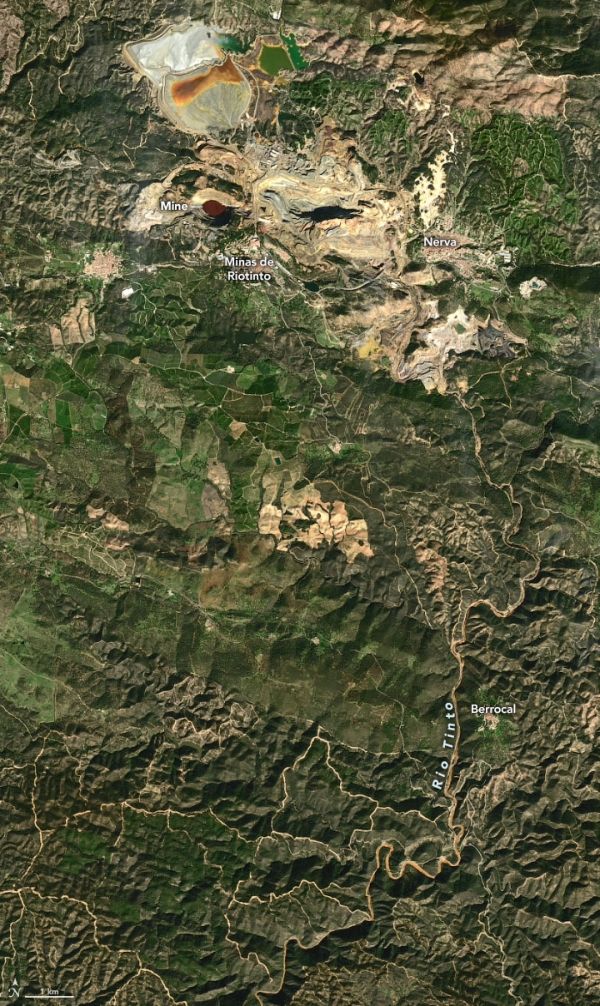For tens of kilometers in southwestern Spain, the Rio Tinto runs a remarkable shade of red. The Operational Land Imager (OLI) on Landsat 8 acquired this image of one colorful section of the river on February 2, 2020.
The Rio Tinto, which means “stained river” in Spanish, flows through an area unusually rich with sulfide ore deposits, which formed hundreds of millions of years ago when volcanoes were active in the area. When the metals in these buried deposits are exposed to water and oxygen, they produce acidic runoff that flows into streams and rivers.
While the acid has made the Rio Tinto inhospitable to most types of life, it has made it more hospitable to sulfide-consuming bacteria and other extremophiles that amplify the acidification process. These organisms give the river its red hue by producing ferric iron, a rust-colored substance. The combined effects of the chemical weathering of rocks and bacterial activity in the water have caused the average pH of the river to drop as low as 2, roughly the same as vinegar.
Continue reading at NASA Earth Observatory
Image via NASA Earth Observatory


